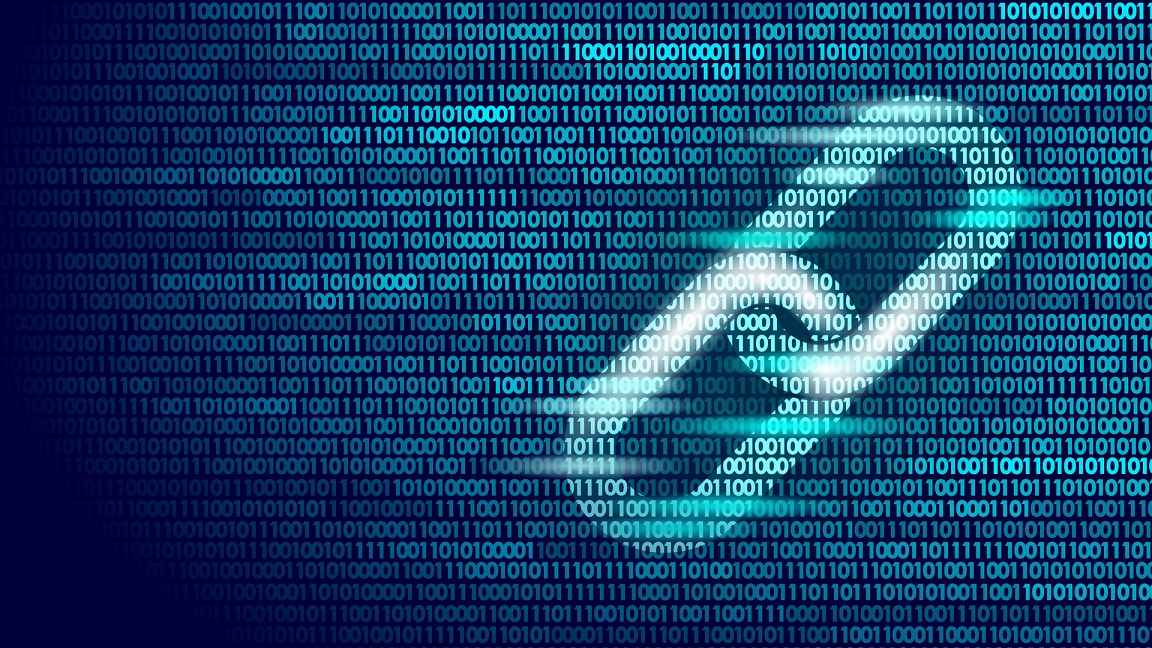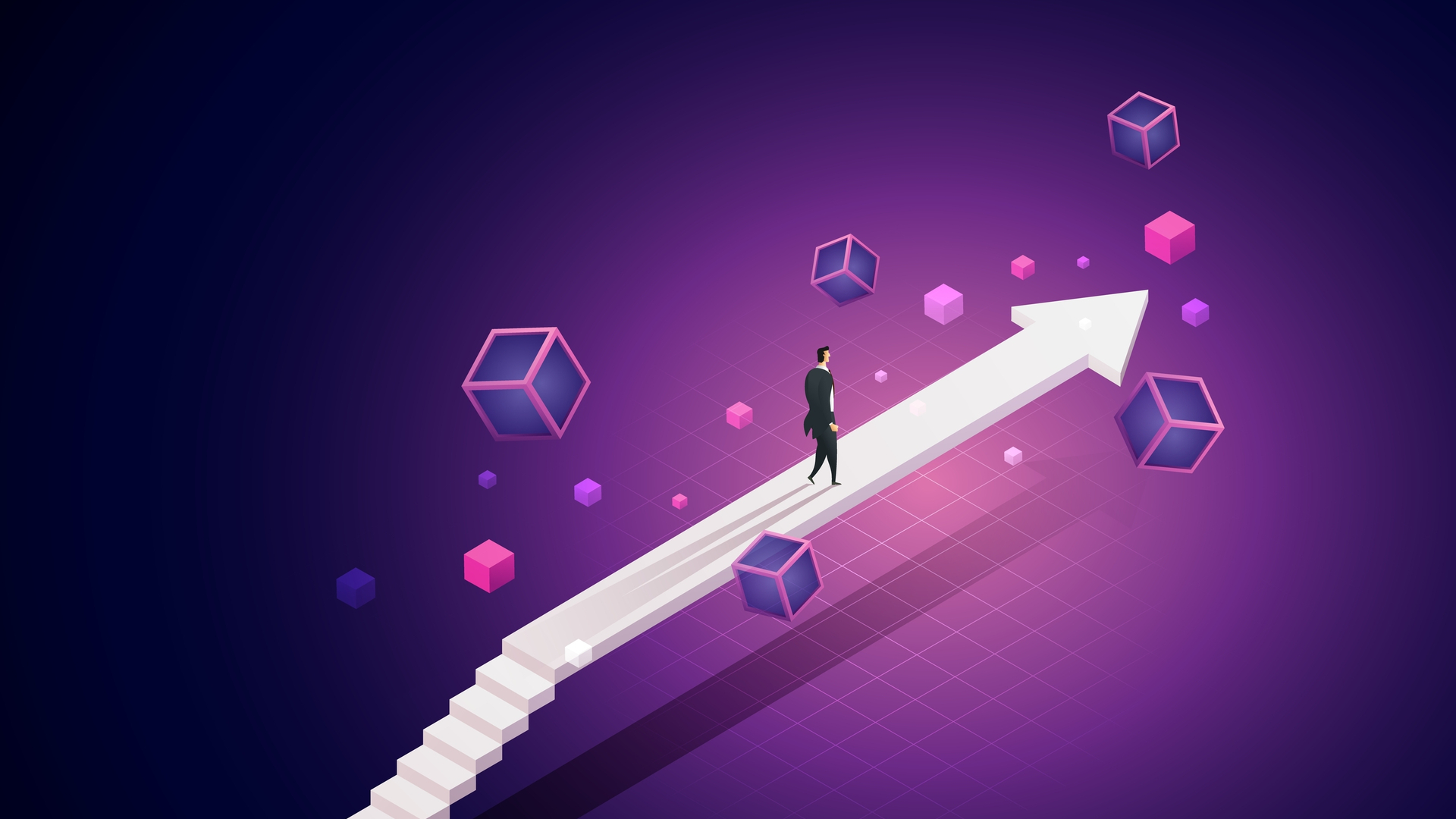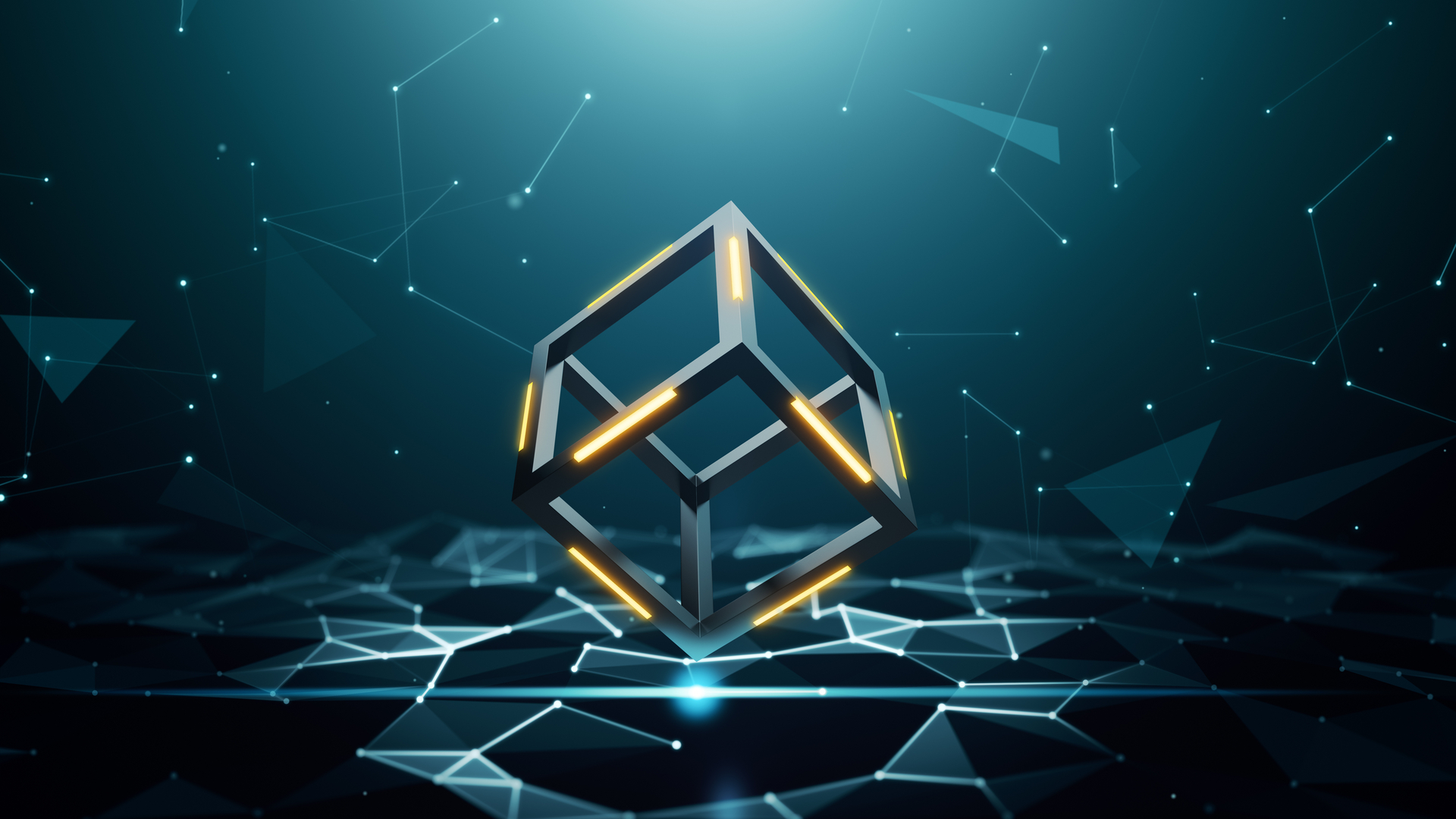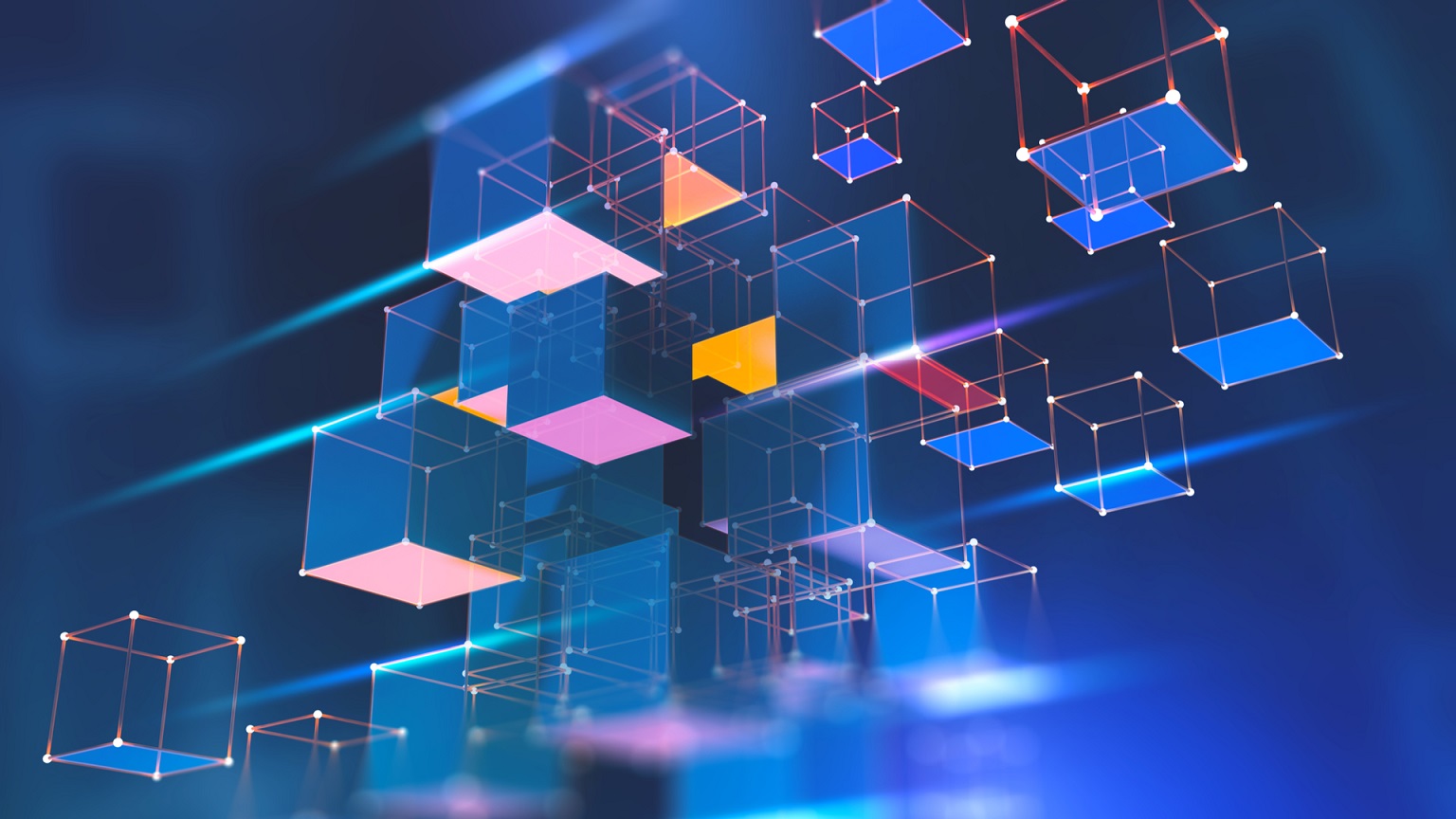Blockchain technology is incredibly popular all over the world and in all areas of life, yet many still wonder how blockchain works and why we need it. So, in this article, we will tell you about its components, technologies, development, and everything that is in any way related to blockchain systems.
What is blockchain?
Blockchain is a system for recording information by entering data into a digital registry, which is duplicated and stored on all computers connected to a particular network. All transactions are recorded in blocks that form one chain (the so-called blockchain hash), and each new transaction is also entered into the register of all network participants. This is how the database gets decentralised, making it virtually impossible to make changes to the data (and, therefore, scam people). After all, if you change one block, the rest will remain intact, and the discrepancy will become apparent.
There is, of course, a more complex blockchain definition. It is a type of Distributed Ledger Technology (DLT) in which all transactions that occur are recorded in an immutable cryptographic code called a hash.
How does blockchain work?
This approach to data storage was first introduced and explained as part of a research project in 1991, but it was not until 2009 that the concept was put into practice with Bitcoin.
The main purpose of the blockchain is to record, store and spread information, not allowing it to be edited to avoid data falsification. In simple terms, the blockchain is a ledger which you can enter something in without the possibility of ever correcting or crossing it out. You can't even destroy the data stored there!
Blockchain for payments allows you to track the movement of an asset, which can be both tangible and intangible. The data block includes all information about this movement. Each such block is connected to the previous and next ones, forming a data chain about the movement and use of the asset by different owners. Each new block embedded in the chain automatically verifies the validity of the previous ones and strengthens the security of the entire chain.
Types of blockchain

There are several types of blockchain, which differ from each other both in various restrictions and advantages:
- Public blockchains are considered the ideal of decentralisation and are completely open to all users of the network, who can view and verify them at any time. There are no restrictions in the public blockchain — anyone who has a PC can join the network.
- Private blockchains are less decentralised, as only selected nodes can participate in the process. Nevertheless, due to this fact, such a blockchain is more secure.
- Hybrid blockchains are of a mixed type, combining both private and public aspects. Some part of the blockchain is controlled by the organisation, while others remain transparent and public for all participants.
- Consortium blockchains are the most “creative” type of blockchain that an organisation creates to meet its own needs, such as initiating or accepting payments.
The importance and benefits of blockchain
Blockchain is a universal technology that can be adapted to absolutely any area of life and economy. Its unique advantages listed below contribute to this:
- The highest level of cybersecurity. All data on the blockchain is completely confidential, and the recipient or sender of funds cannot be traced. At the same time, all records in the chains are encrypted, and there is no single server, which makes it impossible to steal data or destroy it through a system failure or a hacker attack.
- Transparency. All organisations have their own database in one way or another: customers, suppliers, orders, etc. Due to this, it is sometimes difficult to determine their status, check the readiness of the order and obtain up-to-date information. In turn, in the blockchain database, all data is available to all network users in real time. All marks – dates, times, actions – are saved.
- Instant traceability. Blockchain creates an audit trail recording all movements of an asset and all stages of its journey. That is, each member of the network can find out where their asset is at the moment. It is impossible to lose or falsify it, which is essential for the supply sector, where goods can be lost during loading or counterfeited.
- Speed. Banking transactions take a certain amount of time, and maintaining a classic database requires filling out papers. As a result, the efficiency of processes is reduced due to the human factor. However, in the blockchain, all transactions occur instantly. There is also no need to match the ledger and actions, as all calculations are automated and therefore error-free.
- Automation. With the help of smart contracts, which we will discuss below, you can even automate the process of making a deal. There is also no need for overseeing the process: the smart contract ensures that all previous conditions are met before the transaction goes further. This also eliminates the need for third-party and intermediary involvement.
Blockchain security
What provides this much-praised blockchain security? It’s all thanks to the principles of cryptography, consensus and decentralisation, which are at the heart of any blockchain and are aimed at increasing the trust in transactions. Additionally, security is carried out due to the block data system, which we discussed above. Furthermore, all transactions within these blocks are coordinated with each other and verified through a consensus mechanism, in which all participants' devices must recognise the new transaction as reliable.
All data and the network itself are distributed among the participants. There is no single point of data collection or opt-out, and there are no dominant participants. All users are equal and have equal rights to change records and perform transactions. Hence the security that sets blockchain apart from other financial technologies.
Blockchain glossary: components and concepts you need to know

What is a node in blockchain?
The term “blockchain node” within the blockchain means a device that participates in the operation of a large network in one way or another. In the context of blockchain, a node refers to one of the computers that runs the blockchain software to validate and store data in blocks. So, it is a kind of “stronghold” that allows the blockchain to implement its functions. There are usually many such nodes to distribute the load and increase the stability of the blockchain network.
What is a nonce in blockchain?
A nonce is a concept from cryptography, which refers to a random number that is generated by the system for a one-time performance of a particular task. Typically, you cannot reuse a nonce — the system always creates a new one. It can also be a timestamp, a marker to identify some files, or a counter of its views, which helps prevent unauthorised access to something.
Blockchain Explorer
Blockchain Explorer is an analogue of a searching system like Google, which you can use to find any information about the past or present status of the blockchain (but only the public one!). For example, using Explorer you can check at what stage a transaction is, or what the balance of your wallet is. It is essentially a blockchain navigation tool. All it needs is an Internet connection.
Blockchain wallet
A blockchain wallet is a digital wallet which a user can use to buy, store, sell cryptocurrency or send it to other users. Essentially, it is the same wallet you carry in your bag, only this one is online and protected by encryption and cryptography. All wallets have different security protocols and features, but some even allow you to convert cryptocurrency to fiat or withdraw it. Typically, each cryptocurrency project develops and offers its own blockchain wallet, but cryptocurrency exchanges also offer universal and often cross-platform wallets.
Blockchain stocks
More and more startups and companies developing in the field of blockchain technologies and offering their products based on them are appearing on the market. Today, you can also buy blockchain stocks, that is, digital securities, which, like classic securities, can give you the right to a share of the company’s profits or the right to participate in its decision-making process. However, you should know that such investments are backed by digital currency rather than fiat, which can be risky for both the company and investors due to the volatility of the cryptocurrency market. Therefore, the blockchain exchange of digital shares for investment is not suitable for everyone.
Smart contracts
Smart contracts are programmes that track the fulfilment of recorded conditions. Since they are based on the blockchain, it is also impossible to change or break these conditions after the smart contract has been launched. This is a fully automated execution of the agreement, which allows participants to trust each other and not resort to intermediaries as a service. For example, smart contracts are extremely popular in real estate today, as they guarantee a safe and swift transaction.
How to create a blockchain

Step №1. Define the purpose of your blockchain
Blockchain is so popular today that sometimes companies turn to it without even understanding blockchain and why they need it. Therefore, before creating your blockchain, think about what it means for your business. What functions and tasks should it perform?
Step №2. Choose the best consensus mechanism
The original blockchain, that is, the very first one, thanks to which Bitcoin exists, uses the Proof-of-Work blockchain as its mechanism. So, to confirm and conduct a transaction, a network member needs to solve complex mathematical problems, which requires professional equipment. Nevertheless, nowadays, there are many other approaches to the functioning of distributed ledger systems: for example, Proof-of-Stake, deposit-based consensus, elapsed time confirmation, etc.
Step №3. Select your platform
You will find a lot of blockchain platforms online, many of which are completely free and open source blockchain code. When choosing such a platform, build on the consensus mechanism you have chosen, as some of them may not be supported by all platforms.
Step №4. Design nodes
Blockchain solutions may include the need to obtain permission (for example, a state land registry) or not (for example, Bitcoin, where anyone with the right equipment can become a network user and miner). Moreover, blockchain solutions can differ in the types that we discussed above: public, open, hybrid blockchain, or even a consortium if you represent a large and independent organisation.
Step №5. Create a blockchain prototype
To ensure stability and security for your blockchain platform, you need to carefully plan and think through the configuration of the following components:
- Domains
- Permissions
- Issuance, registration, and exchange of assets
- Key management
- Signing and encryption
- Address formats
- Handshake protocol
Many of these components will be impossible to change after the creation of the blockchain, so take this step seriously.
Step №6. Create an API and select the appropriate software elements
Some blockchain platforms offer pre-built APIs, while others require you to create one yourself. You also need to pick the interface and programming languages you will use (it can be anything from standard Python or Java to Golang and Node.js). After that, you choose an external database (say, MySQL) and servers (including mail and web servers).
Step №7. Integrate beneficial technologies
This is an optional step, but it can make your blockchain stronger and more efficient. For example, you can integrate AI, biometrics for authorisation and wallet login, Big Data, Internet of Things, blockchain app, etc. into your system.
Of course, this guide is not complete and is only intended to give you a general idea of how a blockchain is created. If you are not an experienced blockchain developer, you will first need to complete the appropriate training, which you can find in the public domain online, for example, on YouTube.
What is blockchain mining?

There are several ways to get cryptocurrencies (including the popular Bitcoin): buying currencies on exchanges like Coinbase, receiving currencies as payment from another user, or virtually mining them. It is the third method of mining that is called blockchain mining.
Mining is the computational work performed by the nodes (devices) of a network participant to generate new coins of a particular cryptocurrency. In a nutshell, it looks like this: miners simply purchase powerful computing equipment and connect it to the network, and then it does all the work by itself, following the consensus of the network and mining coins by solving algorithms. After a while, the user receives new coins in their wallet and thus obtains a source of passive income.
Blockchain miners
Miners are those users who are engaged in cryptocurrency mining. They can be compared to miners who use computing equipment instead of a pickaxe. Miners are here to solve complex mathematical formulas by supporting the performance of this equipment, which in practice does all the work for them. Anyone can become a miner if they have sufficient budget, technical knowledge, and suitable equipment.
Blockchain use cases
Blockchain in finance and banking
Blockchain used for business can speed up all banking operations a thousand times and, in addition, reduce bureaucracy and software maintenance costs. For example, transactions on a blockchain like Polygon or Solana take only 0.1 seconds at a cost of $0.01, which is much cheaper than the classic Visa or Mastercard payment systems. According to experts, with blockchain, banks can save $27 billion on international transfers in five years!
Blockchain for business
Thanks to the blockchain, you can decrease the burden on accounting: all ledgers are updated automatically and only after the blockchain transaction is completed and confirmed. Furthermore, all channel participants will have access to this ledger, including partners who want to verify the authenticity of transfers. Additionally, only organisations authorised on the network can add or view blocks, which increases the security of the business in terms of accounting and finance.
Blockchain in supply chain management
Supply chain is one of the first niches where the blockchain migrated immediately after its introduction to the market. Its advantage in this area is that it allows you to automatically register, check and track not only the cost of goods, but also its location, quality, certification, loading date, etc. In this way, you can reduce the percentage of defects and losses from counterfeit products, increase the transparency of the material supply, update contracts in a timely manner and forgo outsourcing.
Blockchain for insurance
In insurance, risk management is the most important skill. Blockchains specifically designed for this, such as IBM Blockchain, automate data validation and encrypt data. IBM-based OpenID, which was created together with the American Association of Insurance Services (AAIS), is one of the most exciting blockchain projects in the insurance industry. Blockchain also allows organisations and their clients to keep track of the requirements specified in contracts and optimise work with state insurance departments, which significantly speeds up the work with insurance claims and makes it much easier.
Blockchain in healthcare
Using blockchain, medical institutions, their employees, pharmacies, laboratories and various communities can establish communication with each other, thus ensuring the development of a single ecosystem for accumulating and exchanging information about patients. This will eliminate the risk that patient data will be lost, as well as solve the issue of ethics once and for all (patient data will be available only upon request and to those doctors who have passed the verification). In addition, with the help of the blockchain, it will be possible to identify errors and shortcomings in the current healthcare system, improve the quality of service and overall productivity, while reducing the doctor workload.
Blockchain in retail
Blockchain used for retail is one of the most popular directions for its application in general. For example, the Ethereum virtual machine allows online brands to manage their blockchain and enable e-commerce to support cryptocurrencies, such as Bitcoin. Moreover, blockchain makes all transactions safer, and returns with it are processed almost at the click of a finger, since no one needs to contact the bank and draw up the relevant documents. And, as it is so easy to pay with it, the quality of service and the comfort of customers increase.
Blockchain in agriculture
In agriculture, just as in the supply chain or pharmaceutical industry, blockchain allows tracking supply information and monitoring the transfer chain, which improves food safety. For example, the system records the date of manufacture and compliance with the expiration date, and using built-in AI, you can optimise delivery to addresses based on postal codes.
Blockchain in education
Teachers use the blockchain to fill in grade tables, which are now impossible to tamper with, and to enter into various agreements for the provision of educational services. In addition, the blockchain is used to store and track assignments, lectures and other materials, as well as to increase student accountability through smart contracts, thereby motivating them to learn.
Blockchain games
Blockchain gaming can be considered a new trend in the gaming industry today. Typically, such games look like arcades, role-playing games or MMORPGs, where the elements of buying game goods and mining game resources are based on cryptography. For example, inventory items that the player obtains during the course of the story may be NFTs (non-fungible tokens). Then you can trade these NFTs with other players or sell them as collectibles to cash out real money. In short, blockchain games come down to the “play and earn” principle, since this is basically a source of passive income with an “entertainment” touch.
By the way, such games have existed since 2017, although they started talking about them only in 2021. However, Valve, a game development and distribution company, has banned placing such games on its Steam marketplace, so some market players are opposed to the use of blockchain in the gaming industry.
Is blockchain the future?

The possibilities of blockchain technologies are almost limitless, since these technologies can be adapted to absolutely any niche, task, and need. They bring humanity closer to the very utopia that we can see in science fiction films today: fraud and falsification of data do not exist, all people trust each other, any financial and legal transactions occur in a split second (even purchasing your dream house!), and there is no more bureaucracy, paperwork and long queues. And this is not to mention how much money governments will save; this is all possible with the help of blockchain in FinTech!
Although some projects get disappointed in the market (for example, Microsoft is shutting down its blockchain, judging by the news), the blockchain industry will undoubtedly continue to develop, and not only within cryptocurrencies. Today, blockchain can be found not only in financial services, but also in art. Even if, one day, the future of the crypto world diverges from blockchain in one way or another, such techniques that provide transparency, security, and speed will never be forgotten. So starting to learn more about DeFi or even invest in it is definitely a safe choice.